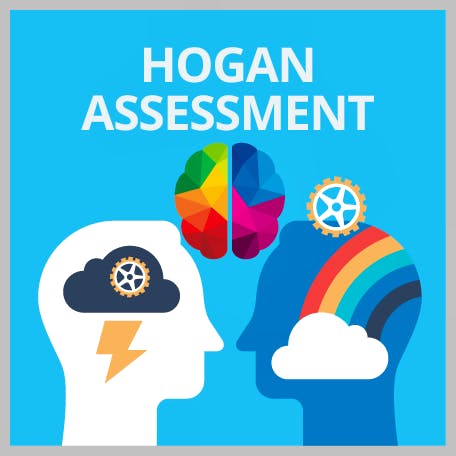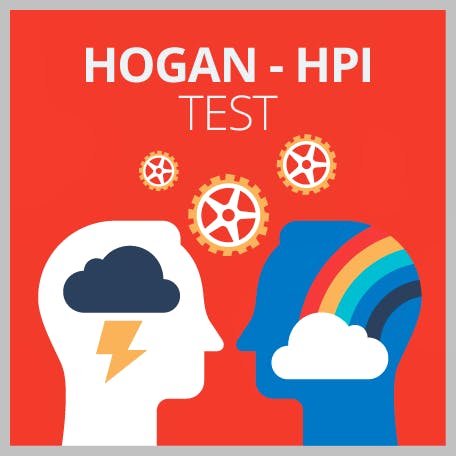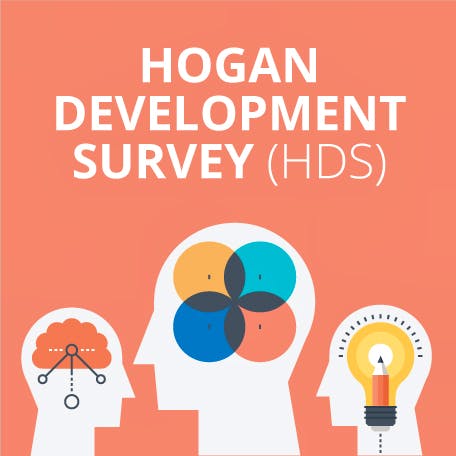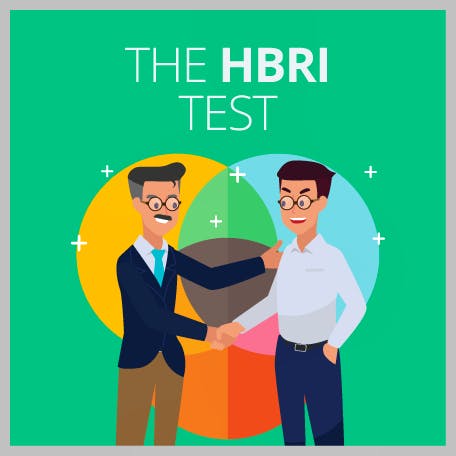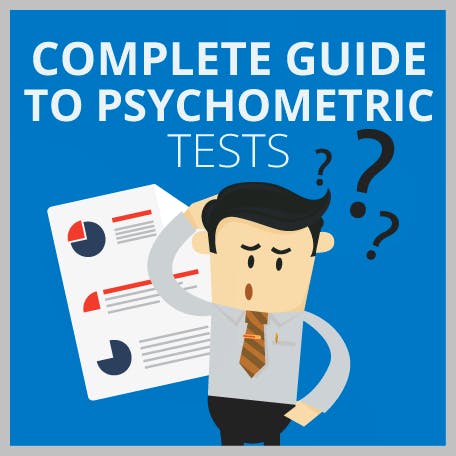A Guide to the Hogan Development Survey (HDS): with Tips & Examples
Updated November 18, 2023
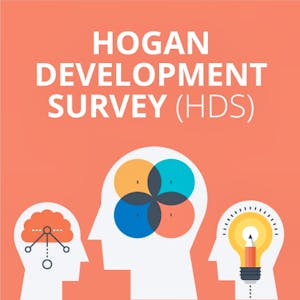
- What Is the Hogan Development Survey?
empty
empty
empty
empty
empty
empty
- What Does the HDS Test Measure?
empty
empty
empty
empty
empty
empty
empty
empty
empty
empty
empty
- The HDS Test Format
- Examples of Hogan Development Survey Questions
- How Is the HDS Scored?
- How to Succeed in the Hogan Development Survey
- Frequently Asked Questions
- Final Thoughts

The Hogan Development Survey (HDS) is an assessment that is mainly used as part of the development and training process, often when employees are looking for promotions or moves into leadership positions.
As a personality assessment, the HDS looks at what is known as ‘dark side personality’ to evaluate the personality traits that could be derailment risks for future success.
In this article, you’ll get an in-depth look at the Hogan Development Survey and how it fits with the other types of assessment that Hogan produces.
You’ll find a detailed discussion of the specific traits that the Hogan Development Survey assesses and what this means in terms of work behaviours and why they are considered to be risks.
You’ll learn more about the structure and layout of the assessment and when you might need to take it, what the questions look like and how you need to answer them, the way the assessment is scored and some tips for success.
What Is the Hogan Development Survey?
Hogan is a well-known and respected publisher of assessments to be used both as part of the recruitment process and for employee development.
Established in 1987, Hogan focuses on occupational psychology and the science of personality, and its most used assessments are the ones that look at different facets of employee personality – the ‘bright side’, the ‘dark side’ and the ‘inside’.
It also has cognitive assessments that might be used as part of the recruitment process.
These include the Hogan Business Reasoning Inventory (HBRI) and the Hogan Judgment (J) as well as the Raven’s APM-III.
HBRI
This assessment looks at the way you think and make decisions, as well as your cognitive abilities.
There are two types of questions on this test; qualitative (logical reasoning and verbal reasoning) and quantitative (numerical reasoning and spatial reasoning).
Hogan Judgment Assessment (J)
The Hogan Judgment assessment covers cognitive abilities and personality traits to assess capability in making good decisions as well as being able to learn from mistakes. It covers being able to adapt and respond positively to criticism.
Raven’s APM-III
This is an abstract reasoning assessment, where matrices containing sequences of images and shapes are used to assess a candidate based on their ability to spot patterns and make decisions based on unfamiliar information.
‘Inside’ Personality – the Hogan Motives, Values and Preferences Index
This is an HDS personality test that looks at what drives an individual, and what they value. It looks at how they prefer to work and the type of culture that they will excel in. These are usually compared to the values and needs of the business to ensure a match.
‘Bright Side Personality’ – Hogan Personality Inventory
The HPI assessment evaluates personality traits when we are at our best – so when things are going smoothly.
It is all about how we respond to others and deal with work situations, based on the five-factor model of personality, including the below traits:
- Adjustment
- Ambition
- Sociability
- Sensitivity
- Prudence
- Inquisitiveness
- Learning approach
‘Dark Side Personality’ – Hogan Development Survey
In contrast to the HPI, the HDS is designed to look at how we react and behave on our worst days, when we are under pressure and things seem to be going wrong.
This assessment looks at the risks associated with certain traits that would indicate an employee was not a suitable candidate for a leadership position.
The Hogan Development Survey test looks specifically at 11 personality traits, each further divided into three subscales.
What Does the HDS Test Measure?
As a personality assessment, the Hogan Development Survey test focuses on the traits that are most likely to pose a risk to success in leadership. These are often referred to as derailment risks, and in the assessment your answers will place your personality somewhere on a scale from low to high for each trait.
There are 11 main traits, and these are subdivided into three subscales each.
Excitable
The subscales for the Excitable trait are:
- Volatile
- Easily Disappointed
- No Direction
Excitable people are likely to be passionate and enthusiastic, but they can also get frustrated and seem moody and irritable. They can get excited about something new but they are more likely to give up on projects or people quickly.
Scoring low on this scale will often mean that you seem calm and that you lack passion.
Scoring high on this scale points towards great enthusiasm but a risk of becoming disappointed and frustrated, as well as coming across as moody.
Skeptical
The subscales for the Skeptical trait are:
- Cynical
- Mistrusting
- Hold Grudges
Skeptical people tend to be on alert for signs of deception from colleagues, but they might not always be willing to act on these problems. They might also be more likely to have bad feelings towards other people and hold grudges.
Scoring low on this scale usually shows that a person is quite naïve and too trusting of others. Scoring high on this scale demonstrates that a person is not trusting, doesn’t want to take action about problems and instead will hold grudges.
Cautious
The three subscales for the Cautious trait are:
- Avoidant
- Fearful
- Unassertive
This trait demonstrates whether you have aversion to risk or fear of failure, but also about how well you deal with criticism and can put yourself out there to decide.
Scoring low on this scale shows that you are impulsive and don’t think much about the risks that might lie ahead.
Scoring high on this scale shows that you will avoid risk as well as criticism, and you have a strong fear of failure.
Reserved
The subscales for the Reserved trait are:
- Introverted
- Unsocial
- Tough
This trait is to do with people who act tough and remote, and they tend to be aloof and seemingly unconcerned with the feelings of others.
A low score on this scale suggests that you might be overly concerned with other people’s feelings.
A high score, on the other hand, would demonstrate that you are detached and unsocial, and that you might appear to be unreachable to others and unconcerned about how people are feeling.
Leisurely
The subscales of the Leisurely trait are:
- Passive Aggressive
- Irritated
- Unappreciated
This is an interesting trait, because people who demonstrate this often appear to be friendly and cooperative, but they are following their own agenda and not interested in following the agenda of another person.
A low score on this scale shows a person who lacks agenda and direction.
Someone who scores highly on this scale can be stubborn, self-serving and uncooperative.
Bold
The three subscales for the Bold trait are:
- Entitled
- Overconfidence
- Fantasized talent
This trait includes things like being fearless and confident as well as self-assuredness, and admitting their mistakes and learning from experience.
A low score on this scale means that you might be lacking in self-confidence.
A high score shows that you are confident and self-assured, but you don’t necessarily take feedback or criticism because you expect to succeed.
Mischievous
The subscales of the Mischievous trait are:
- Risky
- Impulsive
- Manipulative
This trait relates to being impulsive and adventurous, testing limits and seeking risks.
Someone who scores low on this trait tends to be compliant and more conservative and considered to be unadventurous.
A high score on this scale would show more risk-seeking behaviour, being impulsive and not sticking to commitments.
Colorful
The three subscales of the Colorful trait are:
- Public confidence
- Distractible
- Self-display
This trait describes whether you are considered gregarious and fun, whether you are entertaining and enjoy being in the spotlight.
A low score on this scale shows that you are modest, quiet, and self-restrained.
A high score on the Colorful scale means that you are confident in public and enjoy being ‘out there,’ and you might be considered eccentric.

Imaginative
The subscales of the Imaginative trait are:
- Special Sensitivity
- Eccentric
- Creative Thinking
Imaginative people do tend to be innovative and creative, but they can also be self-absorbed.
A low score on this scale would show that you might be more practical and reliant on routine, lacking new ideas.
Those that score highly on this scale might be considered to be visionary and innovative, but they are often really sensitive and more selfish.
Diligent
The three subscales of the Diligent trait are:
- Standards
- Organized
- Perfectionistic
With this trait, they can be considered hard working and meticulous, but they can have exacting standards for themselves and others.
A low score can show lack of planning and attention to detail, as well as a tendency to over delegate.
A high score might show that a person is hardworking and detail-oriented, but they might be a perfectionist.
Dutiful
The subscales for the Dutiful trait are:
- Ingratiating
- Indecisive
- Conforming
Dutiful people tend to be compliant, and more likely to conform in their eagerness to please others.
A low score on this assessment would show that you are overly independent and resent authority.
A high score would show that you are eager to please and willing to conform, but you are indecisive.
If you need to prepare for a number of different employment tests and want to outsmart the competition, choose a Premium Membership from JobTestPrep.
You will get access to three PrepPacks of your choice, from a database that covers all the major test providers and employers and tailored profession packs.
The HDS Test Format
The Hogan Development Survey is an online assessment that is usually taken remotely, and you’ll probably be invited to take part via an email link.
The test itself is presented as a series of statements, and you must decide how much you agree with what the statement is saying.
There are four possible responses:
- Strongly Agree
- Agree
- Disagree
- Strongly Disagree
There are about 170 statements in the assessment, and it isn’t timed – but people tend to complete it in about 15 to 20 minutes.
Examples of Hogan Development Survey Questions
Consider how you relate to each of the following statements and select how much you agree with them:
Strongly Agree | Agree | Disagree | Strongly Disagree
- I usually act before thinking about consequences.
- It is hard for me to forget if someone wrongs me.
- I always help people in need at work.
- I don’t like working alone.
- I thrive in situations of change.
How Is the HDS Scored?
Each trait and subscale are marked on a scale of 100, with 0 being a low score and 100 being the highest score.
When you have completed the assessment, the scores are immediately available for your employer, and they are able to see where your Dark Side Personality sits.
Typically, a higher score on any of these scales means that you have a higher risk of that trait for being a derailment – but a low score can also be problematic.
Like many personality tests, there isn’t really a pass mark that you need to attain; the employers will be looking for various levels of traits on the scales that match the needs of the role or promotion.
How to Succeed in the Hogan Development Survey
Step 1. Take a Paid for or Free Hogan Development Survey Test Online
Practice makes perfect when it comes to any sort of test, and although you don't necessarily need to revise any knowledge or skills to be successful on the Hogan Development Survey, practising taking similar tests will help you to feel more confident about it.
With a Hogan HDS practice test, you will get to know the structure and layout of the assessment, how the questions should be answered and have some idea of what the statements are that might be used in the test.
Obviously these Hogan HDS sample questions won't be exactly the same, but you’ll get a good feel for what it’ll be like when you do take the test.
Step 2. Understand the Traits
Hearing about dark side personality traits might seem negative, but it is important for you and your employers to know how you work and react when under pressure or dealing with difficult situations, especially if you are looking at some sort of leadership position.
Knowing where you might have weaknesses is just as important as recognising your strengths, especially when it comes to development.
The more you know about the traits that the Hogan Development Survey is assessing, the better prepared you will be to take the test.
Step 3. Research the Role
This is an important part of any application, and researching the role will help you get to grips with what sort of person the role needs, and therefore what traits the employer will be looking for.
These details will help you recognise where a high score will hinder your chances, and which dark side personality traits might actually be preferred – for example, a sales-type role might need someone who scores quite highly on the Bold trait or maybe in the Colorful trait.
Step 4. Be Authentic but Pragmatic
It is important to be honest when you take a personality test. Not only is it quite difficult to ‘game’ them for a better score – it is not always obvious from the provided statements what the best answer would be, for example. The Hogan Development Survey is all about fit for a role.
You do need to be pragmatic, though, and bear in mind what you know about the role that you have applied for and the traits that they might be looking for, so that this can affect your Hogan Development Survey answers when you need it to.
In essence, what this means for you is that you want to rate each statement as honestly as you can, with the extra knowledge that you have to help you.
Step 5. Read Statements Carefully
One of the challenging things that happens when you are rating statements in the Hogan Development Survey is that the statements themselves might seem to be saying the same thing – and this can make you question yourself and your answers.
In most cases, they won't be the same but they might be similar, so it is definitely worth looking at least twice at each one before choosing your rating to make sure that you aren’t getting the wrong end of the stick.
The Hogan Development Survey (HDS) is an assessment that is usually used as part of development planning for employees who are looking for a promotion or to go into some sort of leadership position.
Hogan are well-known for its personality-based assessments, and the HDS in particular looks at the derailment risks that might come from what is referred to as dark side personality traits – so the way we react when things aren’t going well and we are under stress.
The Hogan Development Survey (HDS) is a relatively simple assessment to take and to answer; as a personality test you do not need to have any specific skills or knowledge to answer.
However, they can be challenging, because you need to be self-aware to provide accurate and honest answers, and it can be difficult to know what the employers are looking for in your results.
While the Hogan Development Survey (HDS) is a personality test and doesn’t require any revision, it is a good idea to practise with some Hogan Development Survey sample questions before the test for a few reasons.
Not only will you become more familiar with the structure and layout of the assessment, but you will also be able to get an idea of the type of statements that will be featured too.
You can prepare by taking paid for or free Hogan HDS practice tests online.
JobTestPrep has a range of tools including Hogan Development Survey practice tests that will help you get familiar with the test structure and the type of statements and ratings that you will need to use.
You can find Hogan Development Survey sample questions at JobTestPrep, as well as practice tests and helpful tips that will ensure you are able to answer the questions effectively.
If you are taking the Hogan Development Survey (HDS) as part of a recruitment process and you do not reach the required score to pass, then your application will not be taken further.
In this case, you may be able to retake the test if you reapply for the role. If you are taking the HDS as part of an internal development programme, you might be allowed to retake the assessment, but that will depend on your employer.
The Hogan Development Survey (HDS) is sold to employers and recruiters to be used as part of their processes, so if you are taking it as either an employee or a job applicant, it is free to take.
To pass the Hogan Development Survey (HDS), you need to rate the statements provided in the assessment in the right way – to get the required score on the scales that the employer is looking for.
To do this, you need to rate each statement honestly but pragmatically – essentially, you want to show them that you have the right level of personality traits to be successful.
There is no time limit for taking the Hogan Development Survey; like most personality tests the HDS is not timed. However, most people will complete it in 15 to 20 minutes.
The Hogan Development Survey (HDS) assesses what is described as dark side personality – essentially our traits and behaviours that come out when we are in a stressful situation or under pressure. These traits are known as derailment risks, and they can affect the type of leadership we can offer.
There are 170 statements on the Hogan Development Survey, and you need to rate each one on a four-point scale – Strongly Agree, Agree, Disagree, Strongly Disagree. There is no time limit, although most people finish it in less than 20 minutes.
You can find a full practice guide for the Hogan Development Survey (HDS) at JobTestPrep, including a deep dive into the different traits being assessed and full-length practice tests so you have more of an idea about what you are facing.
Final Thoughts
The Hogan Development Survey (HDS) is a personality test that is designed to evaluate our traits and work behaviours on our worst days – the so-called dark side personality.
The test is most often used in leadership development rather than recruitment, but it can sometimes be found when applying to leadership roles.
Taking the assessment is relatively simple; just rate a series of statements as to how much you agree that they describe you – and from your answers the scores will show if there are any derailment risks to your success according to the traits you demonstrate.
For the best results, you need to be honest in your responses, but it is important to bear in mind the role that is in question and the type of person that they are looking for so that you can answer appropriately.











